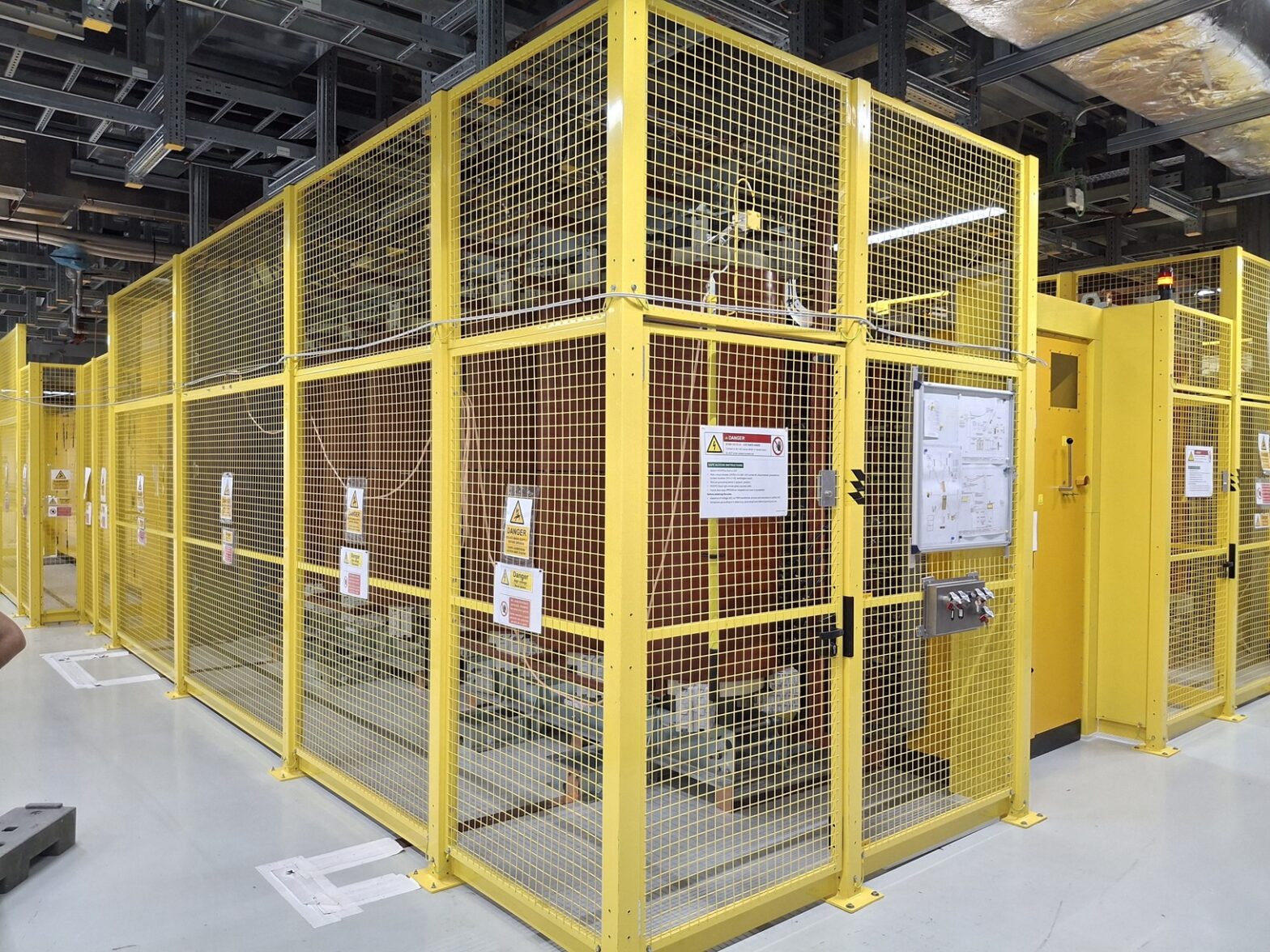Europe starts testing high voltage supplies to heat ITER

The Electron Cyclotron Power Supplies, located in the Radiofrequency Heating Building, will feed the powerful gyrotrons to heat the plasma. ©ITER Organization
For electrical engineers, first energisation is one of the major milestones marked on a project’s timeline. It is the moment when equipment is brought to life and starts to operate under real conditions. At ITER, the teams of F4E, Ampegon and ITER Organization recently reached this point with the high voltage power supplies of the Electron Cyclotron heating systems. After months of installation and checks, they successfully connected the equipment to ITER’s electrical network. This marks the beginning of full commissioning and paves the way for their integration with the gyrotrons.
Europe is responsible for providing eight power supply units, each consisting of a Main High Voltage Power Supply (MHVPS) and two body power supplies (BPS). They are made to feed precise voltage to 16 gyrotrons, which will convert it into powerful microwaves to heat ITER’s plasma. Each MHVPS can deliver up to 6MW of energy (at 55kV of Direct Voltage and 110A). At full capacity, the eight of them could power 100 000 homes —a medium-sized city. This voltage can be adjusted quickly on demand and switched off in microseconds.
In 2013, Fusion for Energy (F4E) signed a contract with Ampegon, a Swiss SME to design and manufacture the units. The supplier completed the series production three years ago and then took on their installation at the ITER Radiofrequency Building. They connected the different power supplies, set up the control cabinets and switchgears and checked the insulation and cooling water systems. In parallel, F4E worked diligently to ensure the equipment met the highest safety standards.
This year, it was finally time to power up the system. After the first tests with low voltage, came the awaited first energisation of the MHVPS with 22kV. This is the first equipment to be fed by ITER’s pulsed power electrical network (PPEN), the infrastructure delivered by F4E that will power the magnets and heating system. “It’s a significant step forward that will allow us to do proper testing, spot possible issues and learn a lot about the equipment’s performance under different operation scenarios,” describes Cyril Lescure, F4E Technical Officer.
“The tests at the factory a few years ago already showed an excellent functional performance. The power supplies even exceeded the stringent technical specifications in aspects like voltage stability, dynamic response and low energy dissipation in case of shutdown. If this is confirmed during commissioning, it will be very positive news for the future operation and reliability of the Electron Cyclotron heating system of ITER,” asserts Ferran Albajar, Programme Manager at F4E.
The ongoing tests will soon lead to the hand-over of the first European power supply unit to ITER Organization. The plan is to commission all eight units in the next two years. During that time, two Ampegon experts will be working every day on-site to operate the systems, in close coordination with F4E. “We have entered an exciting and decisive phase, the culmination of all joint efforts to deliver this advanced electrical equipment. In such a demanding technological environment, trust-based collaboration with F4E and ITER Organization is central. We are highly confident that the results of the commissioning will reward the commitment of everyone involved and let the unique expertise of the involved teams truly shine,” says Marcel Frei, Head of R&D at Ampegon.